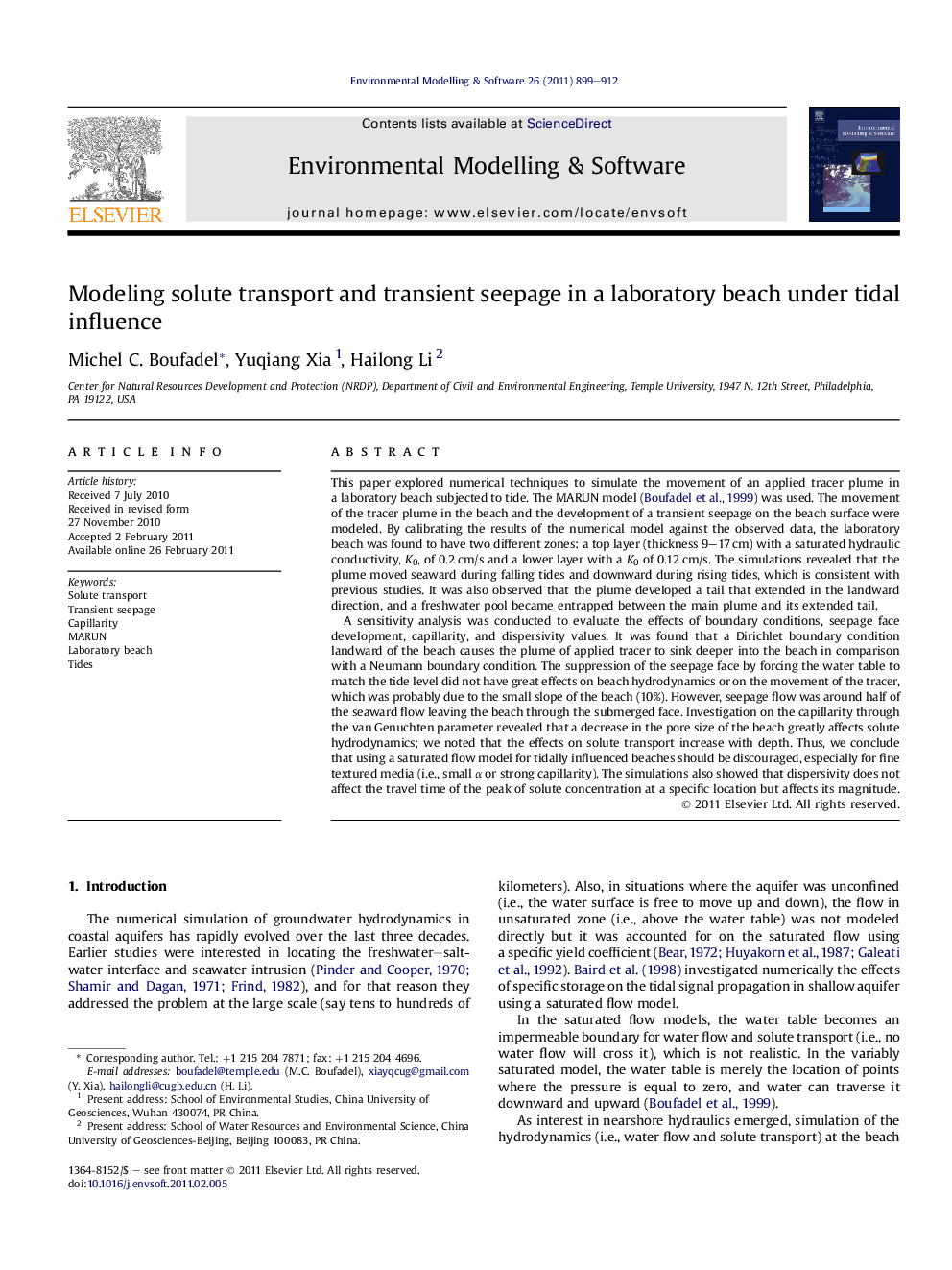| Article ID | Journal | Published Year | Pages | File Type |
|---|---|---|---|---|
| 570248 | Environmental Modelling & Software | 2011 | 14 Pages |
This paper explored numerical techniques to simulate the movement of an applied tracer plume in a laboratory beach subjected to tide. The MARUN model (Boufadel et al., 1999) was used. The movement of the tracer plume in the beach and the development of a transient seepage on the beach surface were modeled. By calibrating the results of the numerical model against the observed data, the laboratory beach was found to have two different zones: a top layer (thickness 9–17 cm) with a saturated hydraulic conductivity, K0, of 0.2 cm/s and a lower layer with a K0 of 0.12 cm/s. The simulations revealed that the plume moved seaward during falling tides and downward during rising tides, which is consistent with previous studies. It was also observed that the plume developed a tail that extended in the landward direction, and a freshwater pool became entrapped between the main plume and its extended tail.A sensitivity analysis was conducted to evaluate the effects of boundary conditions, seepage face development, capillarity, and dispersivity values. It was found that a Dirichlet boundary condition landward of the beach causes the plume of applied tracer to sink deeper into the beach in comparison with a Neumann boundary condition. The suppression of the seepage face by forcing the water table to match the tide level did not have great effects on beach hydrodynamics or on the movement of the tracer, which was probably due to the small slope of the beach (10%). However, seepage flow was around half of the seaward flow leaving the beach through the submerged face. Investigation on the capillarity through the van Genuchten parameter revealed that a decrease in the pore size of the beach greatly affects solute hydrodynamics; we noted that the effects on solute transport increase with depth. Thus, we conclude that using a saturated flow model for tidally influenced beaches should be discouraged, especially for fine textured media (i.e., small α or strong capillarity). The simulations also showed that dispersivity does not affect the travel time of the peak of solute concentration at a specific location but affects its magnitude.
► We presented the numerical techniques to investigate the solute movement in tidally influenced beaches by simulating the applied tracer experiments in laboratory beach. ► The variably-saturated model MARUN was employed to numerically reproduce the behavior of the tracer plume within the beach corporately considering the unsaturated zone hydraulics and transient seepage face. ► We observed that the plume developed a tail that extended in the landward direction, and a freshwater pool was entrapped between the main plume and its extended tail. ► Sensitivity analyses were conducted to evaluate the effects of the model parameters on the beach hydrodynamics. ► We concluded that using a saturated flow model should be discouraged when modeling the hydrodynamics of a tidally influenced beach.
